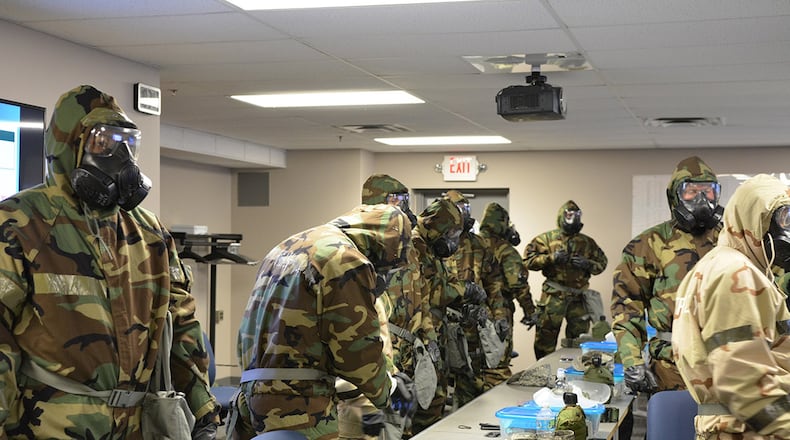Within a squadron, the UDM functions as the liaison between the deployed members and their unit commander. They track all requirements that need to be completed by the member prior to departure and make sure members depart on time.
In addition, UDM’s track and report the readiness of a unit’s assets.
“Every month, it is the UDM’s responsibility to inform the commander of the status of the unit readiness report,” said Bottorff.
Various Department of Defense resources define readiness as the measurement of the ability units have to accomplish deployment missions. In a recent report, the Congressional Research Service broke down the term into two principals: the first regards a broad sense of whether the military is capable of doing what the nation asks, and the second refers to what enables the military of its capability.
Basically, readiness measures the size of the military force structure and sophistication of its equipment and weaponry.
Military personnel have several requirements that need to be completed prior to deploying. Some examples of the requirements are getting cleared medically, completing computer-based training, getting weapons qualified, and if needed, attending additional specified training.
“It’s a lot of work, but it’s our job to stay on top of making sure all requirements have been met and dealing with all the issues that may come up,” Bottorff said.
There can be times where a military member has processed completely and is ready to go with flight tickets in hand, but last-minute issues come up that prevent him or her from actually departing.
When a tasking cannot be filled at the appointed time, the UDM has to either start processing another member to fill the tasking or send back a notification, stating the unit cannot fill the requirement.
“Sending back a reclama [notification stating the unit cannot fill the tasking] is not good,” said Bottorff. “It usually means that the member at the deployed location, who’s waiting to get replaced, ends up staying there longer until another unit finds a person with the same skill code to replace them.”
A first for the UDM program is Bottorff’s development of a tool that calculates travel costs for a deployed member – a requirement from the Wright-Patterson AFB finance department. Prior to this development, each UDM could take up to 30 minutes typing in required information for each member.
Now, with his Excel spreadsheet, the information auto-populates, calculates the numbers and provides Bottorff with a travel cost estimate to be submitted to the finance department.
Bottorff is also a member of the Installation Deployment Readiness Cell, a function that is involved in the Personnel Deployment Function line process.
The PDF line is a pre-deployment exercise process that, in the event of a mass deployment, allows all involved entities to perform the efficient and expedient processing of deploying members. The IDRC manages the logistics of the deploying members in a PDF line by getting them from their unit to the line, through the line and onto the aircraft. The IDRC tracks all moving parts.
“I love every bit of my job,” Bottorff said. “As a UDM, all new personnel who process in with me, I try to get to know every one of them.”
About the Author
